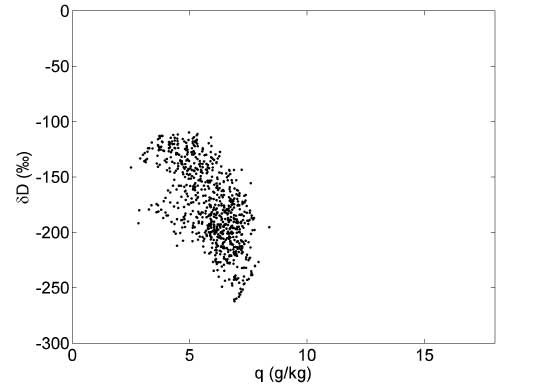Problem: Global climate models show that moisture recycling due to evaporation of rainfall should be an important process controlling tropical humidity; however, this process is difficult to measure directly.
Lighter isotopes preferentially evaporate; therefore, the isotopic composition of vapor reflects the strength of moisture recycling. Until recently, there have been too few such measurements to conduct a systematic analysis of moisture recycling in the atmosphere; This has changed with the development of TES isotopic retrievals.
We identified an isotopic signature in TES observations. The ratio of 1H2HO to H2O (denoted δD) is anti-correlated with H2O (q) in regions of strong tropical convection such as the Asian Monsoon. Detailed experiments with the GISS climate model allow us to attribute this signature to moisture recycling exclusively.
This example shows that TES vapor isotope measurements provide details about moist processes in the atmosphere and how they should be represented in climate models.

Over the Asian Monsoon region, TES data show that increasing humidity (q) corresponds to isotopically lighter water vapor (δD).

The same general pattern appears in the GISS climate model when when isotopic processes during moisture recycling are enabled.
9.17.2010